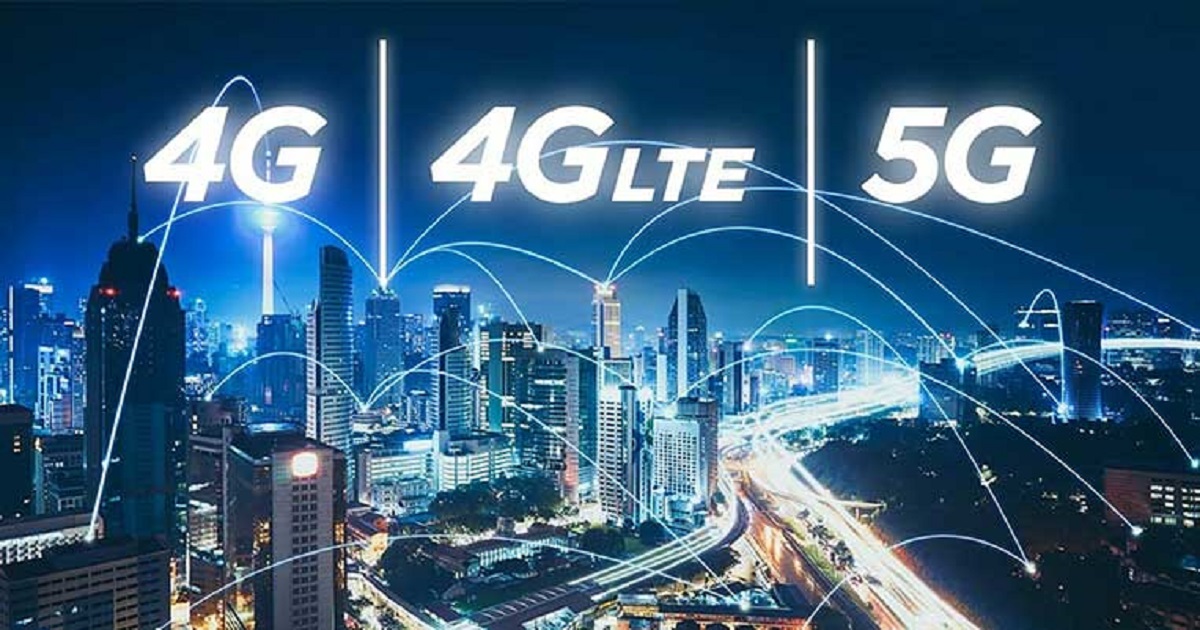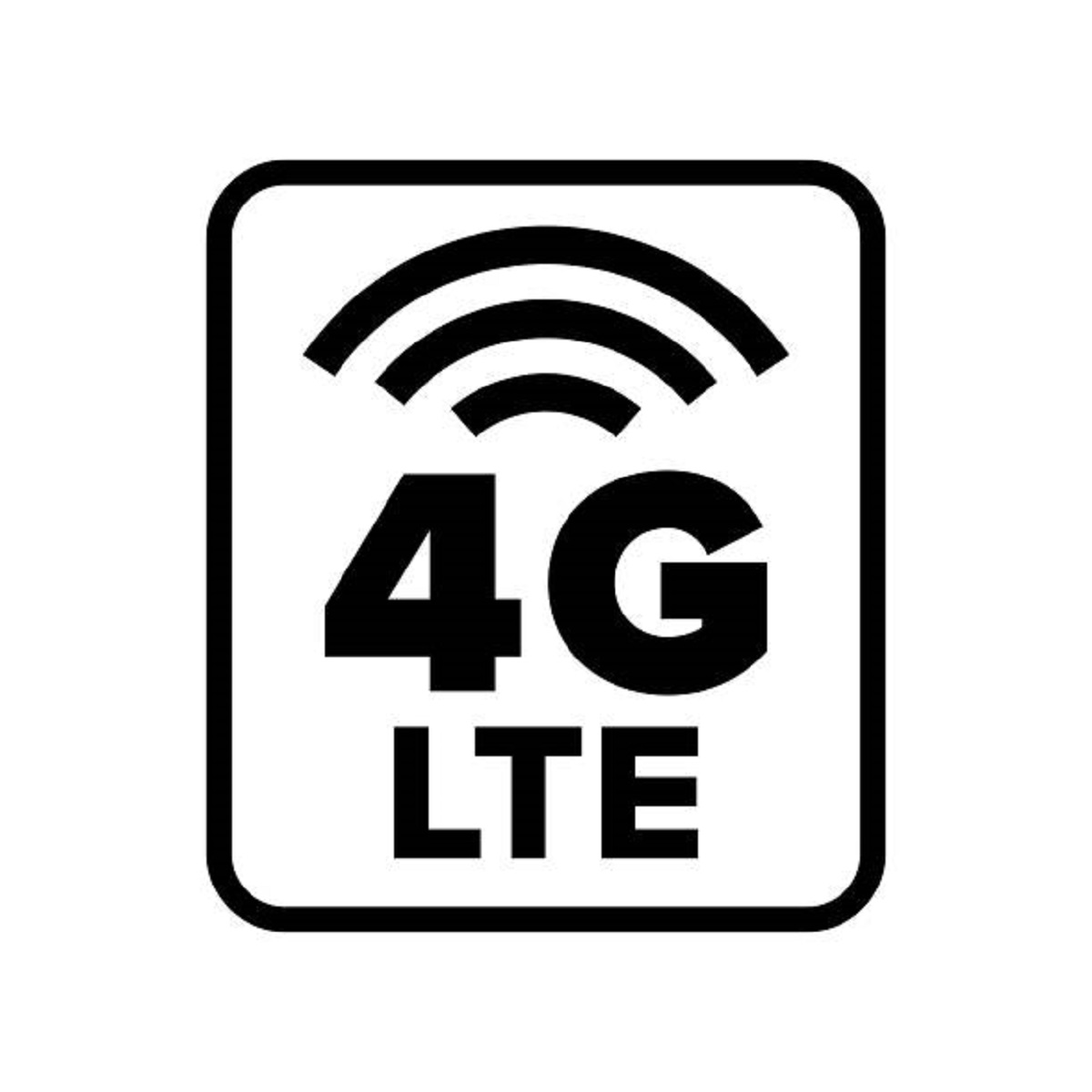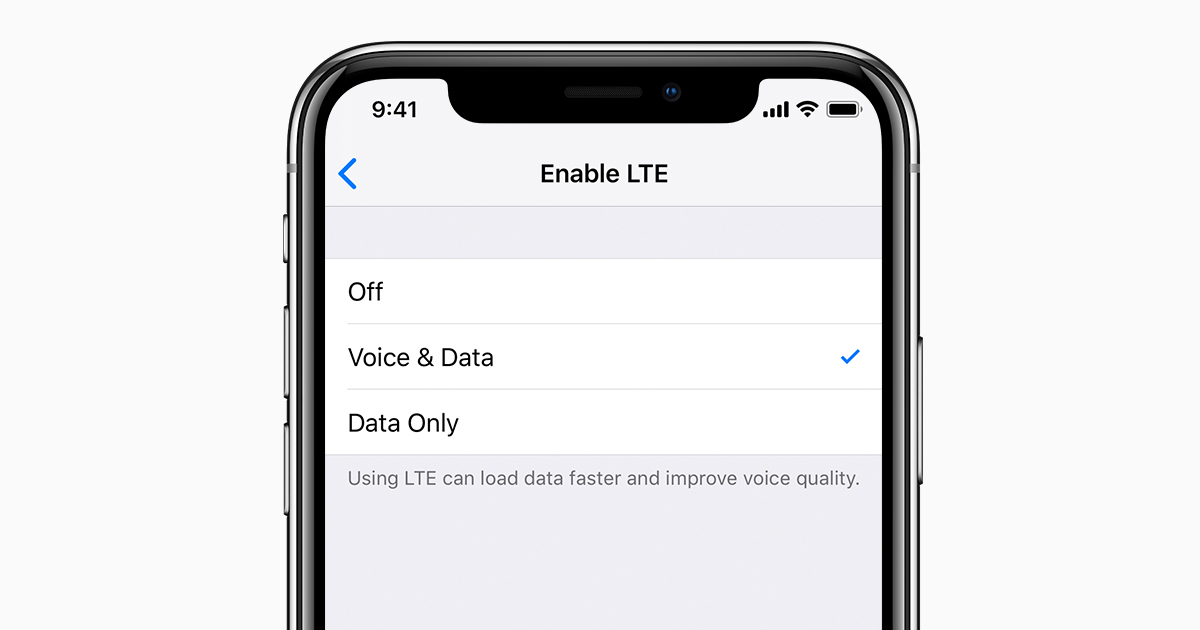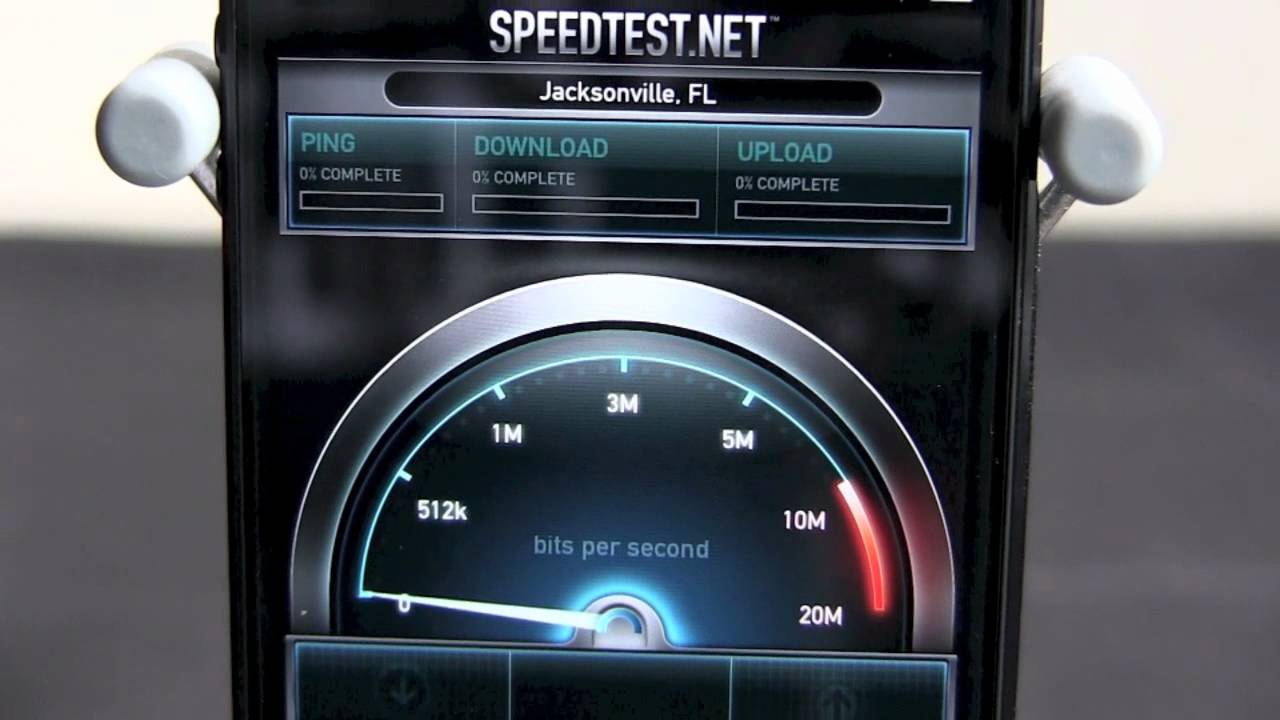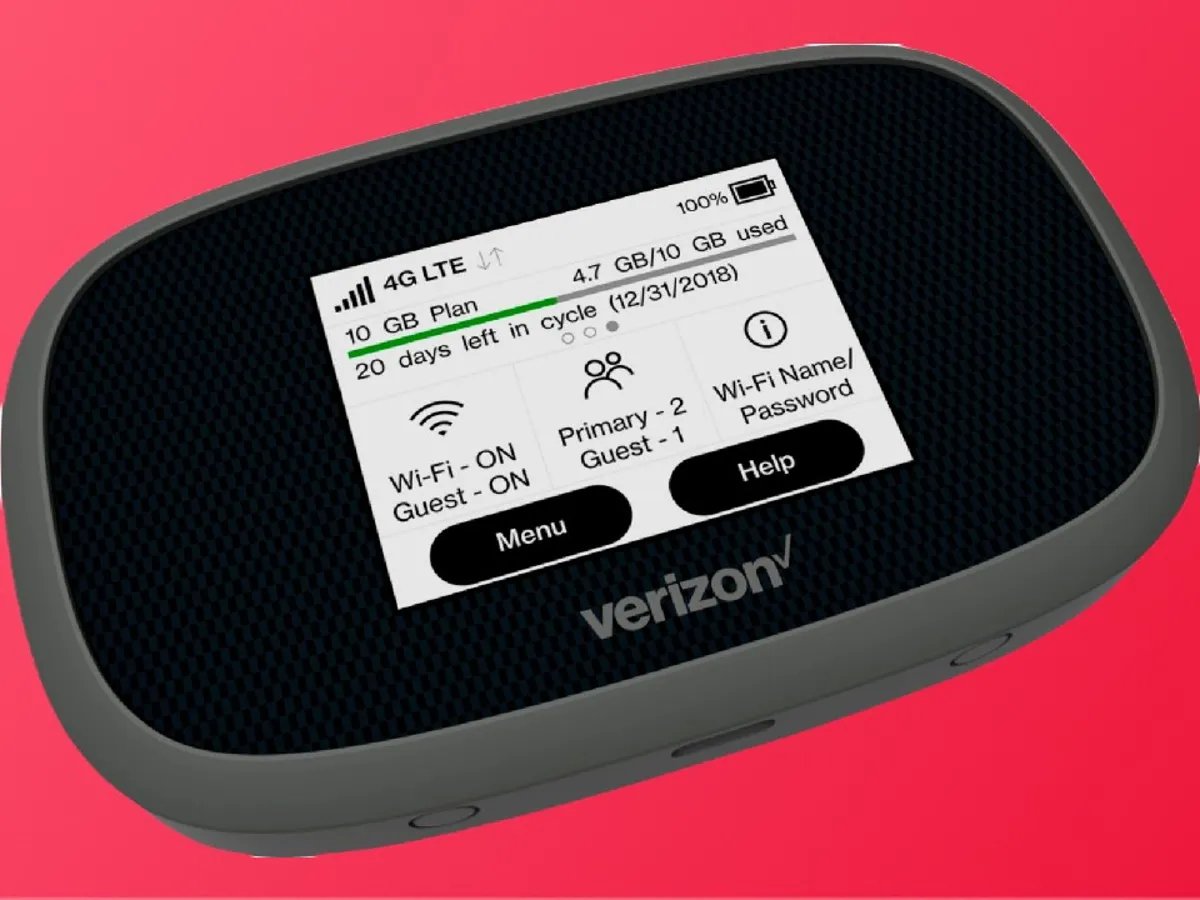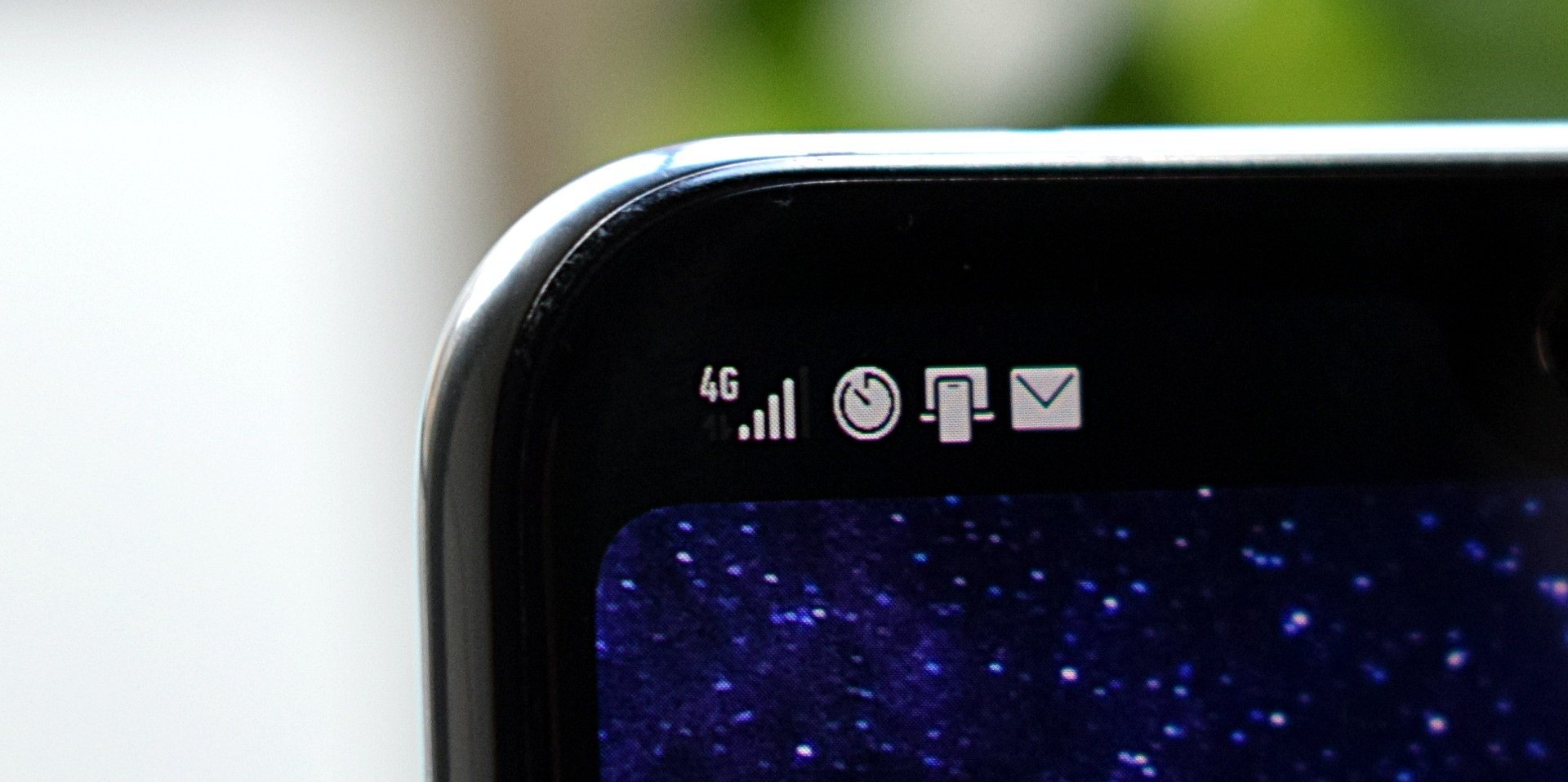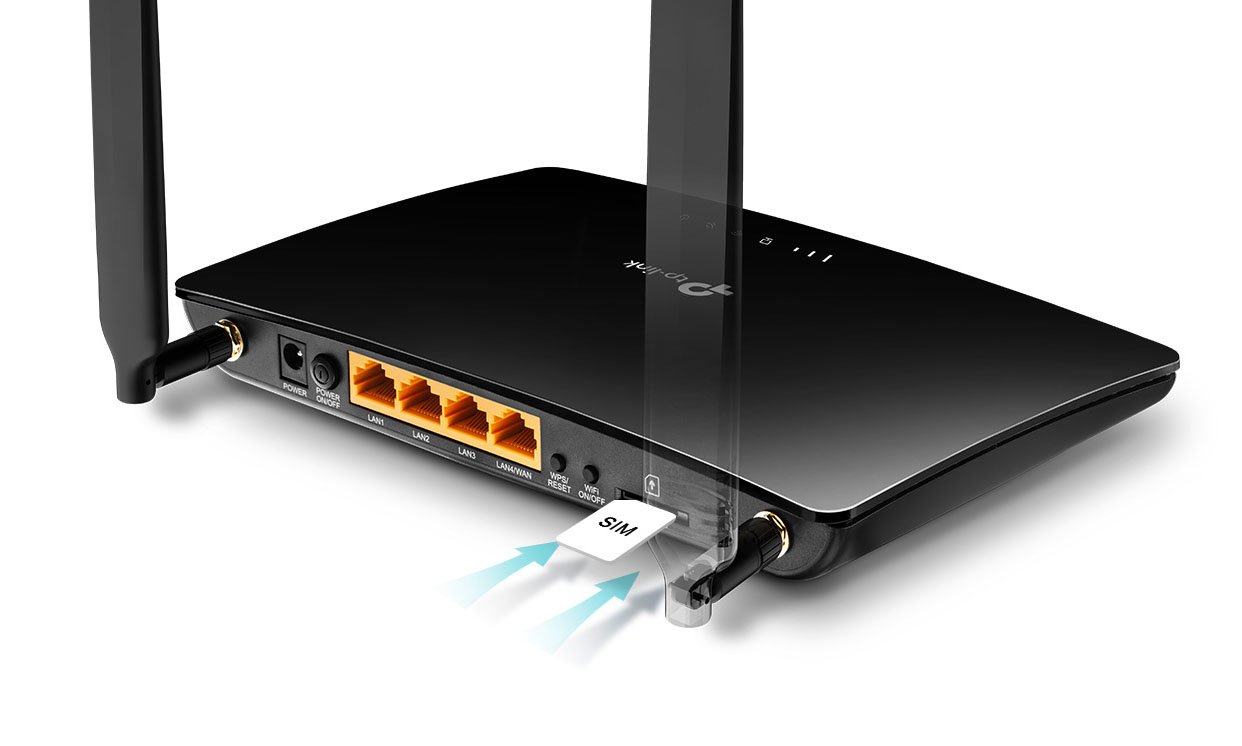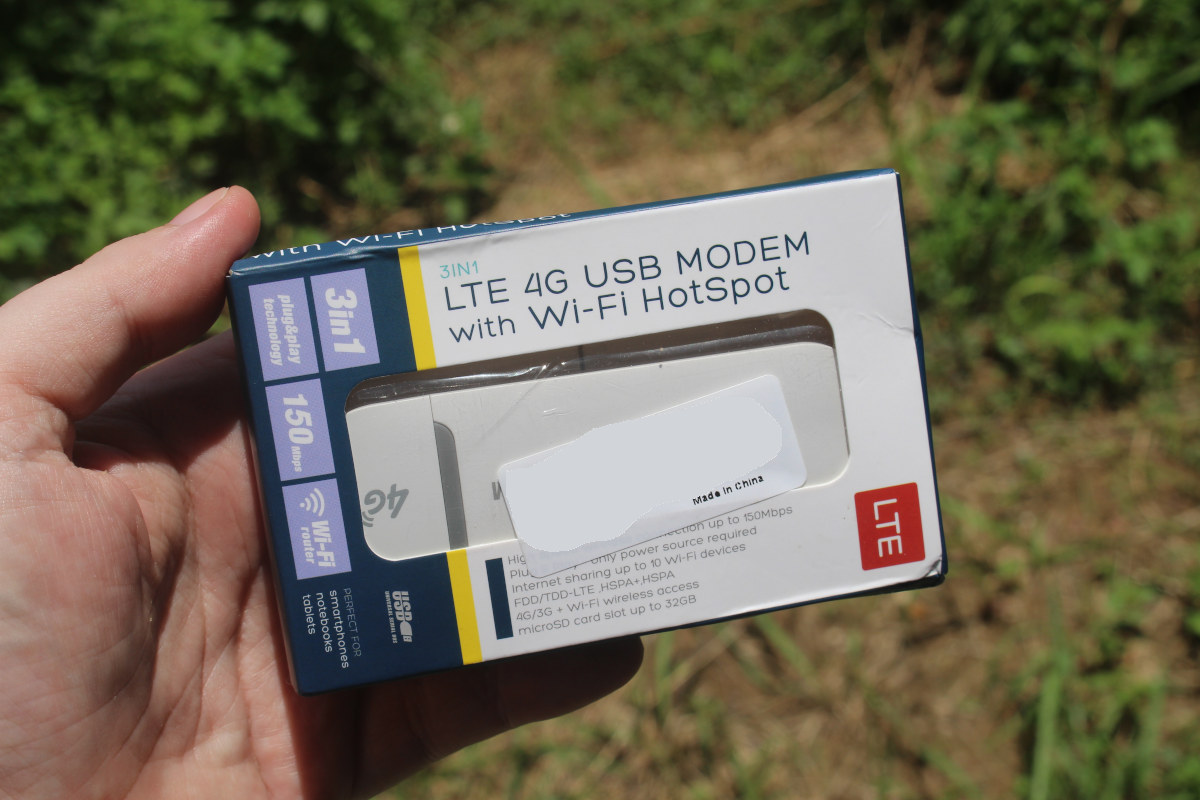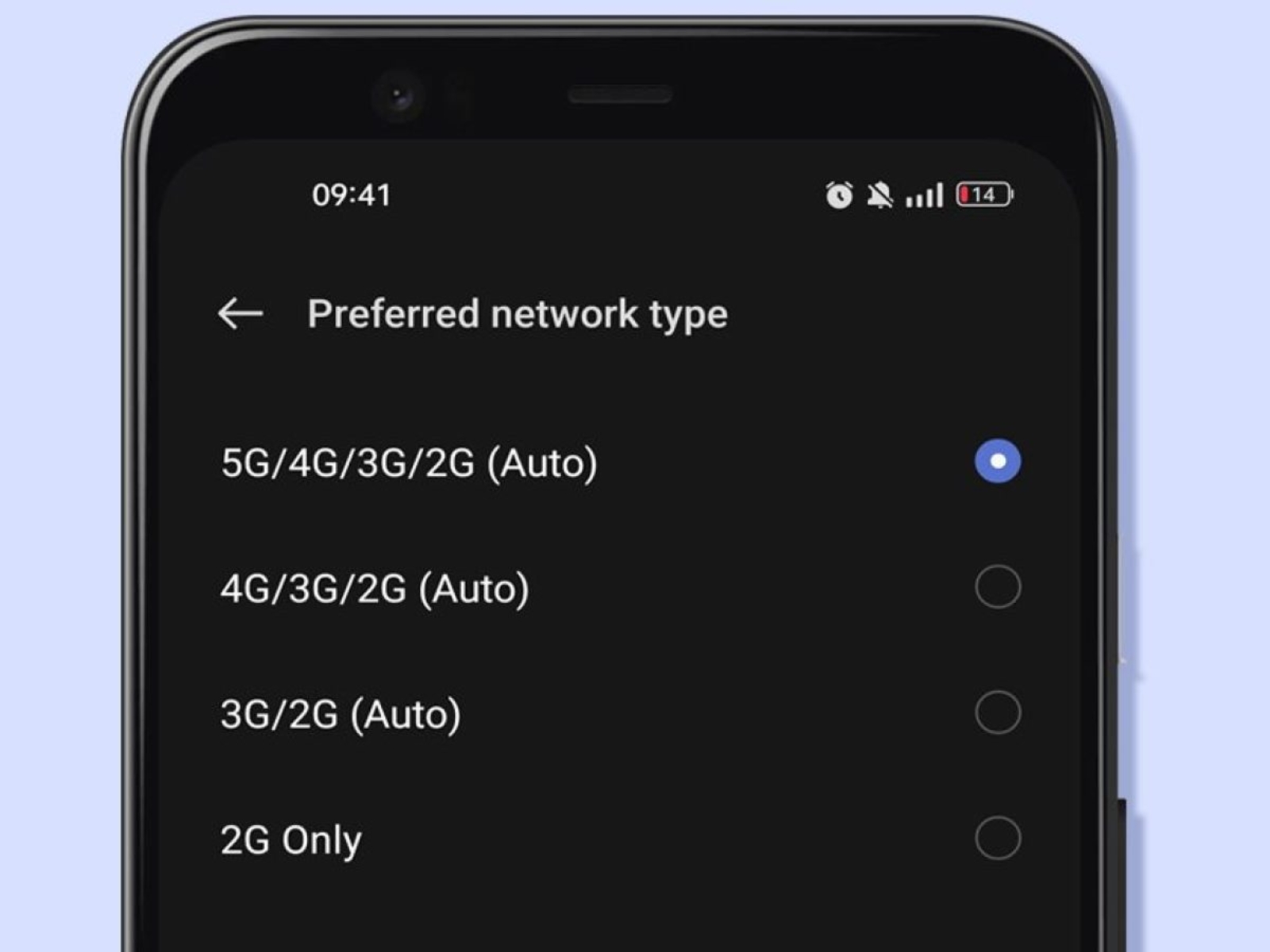Introduction
As technology continues to evolve, the field of telecommunications has witnessed significant advancements in recent years. In today’s fast-paced digital world, staying connected is more crucial than ever. With the advent of 4G and LTE, the way we communicate and access data has been revolutionized. These transformative technologies have brought about faster internet speeds and improved connectivity, enabling seamless communication and enhanced user experiences.
4G, also known as the fourth generation of mobile network technology, and LTE, which stands for Long Term Evolution, are terms that are often used interchangeably. They represent the latest standard in mobile communications, enabling users to access the internet and transfer data quickly and efficiently. While both 4G and LTE provide enhanced connectivity, there are subtle differences between the two.
Throughout this article, we will delve into the world of 4G and LTE, exploring their key features, advantages, and their impact on our daily lives. We will also examine the differences between 4G and LTE and shed light on how LTE works and its network architecture. So, if you’ve ever wondered what 4G and LTE are all about, sit back, relax, and prepare to be enlightened.
What is 4G?
4G, short for the fourth generation, is the latest standard in mobile network technology. It succeeded the previous 3G network and brought about a significant improvement in data transfer speeds and overall connectivity. With 4G, users can enjoy faster internet browsing, smoother streaming of multimedia content, and quicker downloads.
One of the defining features of 4G is its ability to deliver high-speed internet access. With download speeds reaching up to 100 Mbps, 4G allows users to experience a seamless online experience, even when engaging in data-intensive tasks such as streaming high-definition videos or playing online games.
In addition to speed, 4G also offers improved network capacity and reliability. This means that more users can connect to the network simultaneously without experiencing a decline in performance. As a result, 4G networks can handle a higher volume of data traffic, ensuring that users can stay connected even in crowded areas or during peak usage times.
Furthermore, 4G technology supports low-latency communication, which refers to the time it takes for data to travel from one device to another. This low latency is crucial for real-time applications such as video conferencing or online gaming, where even the slightest delay can impact the user experience.
Another significant aspect of 4G is its compatibility with a wide range of devices. From smartphones and tablets to laptops and IoT devices, 4G networks support various devices, ensuring that users can stay connected no matter what device they are using. This versatility makes 4G a ubiquitous technology that caters to the diverse needs of modern users.
Overall, 4G is a game-changer in the world of mobile communications. Its faster speeds, improved network capacity, low latency, and device compatibility have transformed the way we connect, communicate, and access information on the go. With 4G, staying connected has never been easier or more convenient.
Key Features of 4G
4G technology comes with a host of impressive features that have revolutionized the mobile communication landscape. These features enhance the overall user experience and provide a seamless and efficient connectivity experience:
- High-Speed Internet: One of the fundamental features of 4G is its ability to deliver high-speed internet access. With download speeds ranging from 10 to 100 Mbps, users can enjoy faster web browsing, smoother streaming of multimedia content, and quicker downloads.
- Improved Network Capacity: 4G networks have significantly higher network capacity compared to their predecessors. This means that more users can connect to the network simultaneously without experiencing a decline in performance. The increased network capacity ensures a reliable and consistent connection, even in crowded areas or during peak usage times.
- Low Latency: 4G technology supports low-latency communication, minimizing the delay in data transfer. This low latency is essential for real-time applications like video conferencing, online gaming, and IoT devices, where instant responsiveness is critical.
- Seamless Connectivity: 4G provides seamless connectivity that allows users to stay connected while on the move. Whether you’re traveling in a car or using public transport, 4G networks ensure a consistent internet connection, enabling uninterrupted communication and access to online services.
- Compatibility: 4G networks are compatible with a wide range of devices, including smartphones, tablets, laptops, and IoT devices. This compatibility makes it easy for users to connect to the network using their preferred devices.
- Enhanced Voice Services: In addition to data transfer, 4G networks also offer improved voice quality through voice-over-LTE (VoLTE) technology. VoLTE provides high-definition voice calls, making conversations crystal clear and ensuring a superior audio experience.
- Security: 4G networks prioritize security, offering advanced encryption algorithms and secure protocols. These measures protect user data and ensure secure communication over the network.
These key features of 4G have transformed the mobile communication landscape, offering users faster internet speeds, improved network capacity, seamless connectivity, and enhanced voice services. With 4G technology, users can enjoy a superior and more enjoyable experience when it comes to staying connected on the go.
Advantages of 4G
4G technology has brought about numerous advantages that have revolutionized the way we connect and communicate. Here are some of the key benefits of using 4G:
- Fast Internet Speeds: One of the major advantages of 4G is its ability to provide faster internet speeds compared to previous generations of mobile networks. With download speeds reaching up to 100 Mbps, users can browse the web, stream multimedia content, and download files at lightning-fast speeds, making their online experience more efficient and enjoyable.
- Seamless Multimedia Streaming: 4G networks enable seamless streaming of multimedia content, such as high-definition videos, music, and live broadcasts. Users can enjoy uninterrupted streaming, with minimal buffering and no lag, ensuring a smooth and immersive multimedia experience.
- Enhanced Gaming Experience: For avid gamers, 4G provides a significant advantage by offering low latency and fast response times. This means that gamers can enjoy real-time online gaming without experiencing delays or interruptions, leading to a more immersive and enjoyable gaming experience.
- Improved Productivity: With faster internet speeds and reliable connectivity, 4G enables users to stay productive while on the go. Business professionals can access documents, send emails, and hold video conferences without worrying about slow connections or dropped calls. This increased productivity enables professionals to work efficiently and seamlessly from anywhere.
- Efficient Data Transfer: 4G networks allow for faster and more efficient transfer of data, making tasks such as file sharing and cloud storage more convenient and time-saving. Users can easily transfer large files or upload content to the cloud, streamlining their workflow and ensuring quick access to important data.
- Improved Voice Quality: 4G networks support high-quality voice calls through voice-over-LTE (VoLTE) technology. This means that calls made over 4G networks have superior voice quality and clarity, providing a more immersive and enjoyable conversation experience.
- Increased Device Compatibility: 4G networks are compatible with a wide range of devices, including smartphones, tablets, laptops, and IoT devices. This compatibility ensures that users can connect to the network using their preferred devices, allowing for a seamless and integrated connectivity experience.
These advantages of 4G have transformed the way we connect, communicate, and use the internet on our mobile devices. The blazing-fast speeds, seamless multimedia streaming, enhanced gaming experience, increased productivity, and improved voice quality have made 4G technology an integral part of our daily lives, delivering a superior mobile connectivity experience.
What is LTE?
LTE, which stands for Long Term Evolution, is a standard for wireless communication that represents a significant advancement in mobile network technology. It is often used interchangeably with the term 4G but specifically refers to the technology that enables high-speed data transfer over mobile networks.
LTE builds upon the foundations of previous mobile network technologies, such as 2G and 3G, and offers several key improvements in terms of speed, capacity, and efficiency. It utilizes a packet-switched network architecture, enabling data to be transmitted in small packets, resulting in faster and more efficient data transmission.
One of the distinguishing characteristics of LTE is its ability to support high data transfer rates. It offers download speeds of up to 150 Mbps and upload speeds of up to 75 Mbps, allowing users to experience fast internet connectivity on their mobile devices.
LTE achieves these high speeds by utilizing advanced technology such as Orthogonal Frequency Division Multiplexing (OFDM) for downlink and Single Carrier Frequency Division Multiple Access (SC-FDMA) for uplink. These modulation techniques optimize spectrum efficiency and enhance the capacity of the network.
Moreover, LTE provides low latency communication, which reduces the delay in data transmission. This lower latency is particularly important for real-time applications, such as online gaming, video calling, and autonomous vehicles, where real-time interaction and responsiveness are critical.
Another significant feature of LTE is its support for multiple-input, multiple-output (MIMO) technology. MIMO allows for the simultaneous transmission and reception of multiple data streams, which improves both the capacity and reliability of the network. This results in improved signal quality, enhanced coverage, and a more stable connection for users.
Furthermore, LTE offers improved spectral efficiency, allowing mobile operators to support a higher number of simultaneous connections and accommodate the increasing demand for mobile data. This enhanced efficiency ensures that users can enjoy consistent and reliable connectivity, even in densely populated areas or during peak usage times.
LTE has become the predominant mobile network technology worldwide, providing users with fast and reliable wireless connectivity. It has paved the way for advanced applications, such as streaming high-definition videos, utilizing cloud services, and leveraging the Internet of Things (IoT) technology. With its impressive data transfer speeds, low latency, and efficient network architecture, LTE continues to shape and redefine the way we stay connected on our mobile devices.
LTE vs. 4G
The terms LTE and 4G are often used interchangeably, leading to confusion about their differences. While LTE is a specific technology, 4G is a broader term that encompasses various advanced mobile network technologies. Let’s take a closer look at the key differences between LTE and 4G:
Definition: LTE refers to Long Term Evolution, which is a specific technology used for high-speed wireless communication. On the other hand, 4G is a broader term that encompasses different wireless communication technologies, including LTE, WiMAX, and HSPA+.
Speed: LTE offers faster download and upload speeds compared to other 4G technologies. LTE networks can achieve download speeds of up to 150 Mbps, while other 4G technologies usually have lower maximum speeds.
Network Architecture: LTE utilizes a packet-switched network architecture, which allows for more efficient and faster data transmission. Other 4G technologies may use different network architectures, such as a combination of circuit-switched and packet-switched networks.
Latency: LTE generally offers lower latency compared to other 4G technologies. Low latency is crucial for real-time applications like online gaming and video conferencing, as it reduces the delay in data transmission.
Compatibility: LTE networks are backward compatible with 3G networks, allowing seamless transition between the two. This means that devices that support LTE can also connect to 3G networks if LTE coverage is unavailable. However, not all 4G technologies are compatible with 3G networks.
Deployment: LTE has been widely deployed globally and is the dominant technology used for 4G networks. Other 4G technologies like WiMAX have seen limited deployment and are less commonly used.
Industry Standards: LTE is based on a set of industry standards established by the 3rd Generation Partnership Project (3GPP). These standards ensure interoperability and compatibility between different LTE networks. Other 4G technologies, such as WiMAX, have their own set of standards.
In summary, LTE is a specific technology within the broader category of 4G. While other 4G technologies exist, LTE has become the de facto standard for high-speed mobile communication. Its faster speeds, low latency, efficient network architecture, and backward compatibility have made LTE the preferred choice for mobile networks worldwide. So when you hear the term 4G, it’s often referring to LTE technology.
Benefits of LTE
LTE, or Long Term Evolution, offers numerous benefits that have revolutionized the mobile communication industry and the way we connect and access data. Here are some of the key advantages of LTE:
- Fast Data Transfer Speed: LTE provides significantly faster data transfer speeds compared to previous generations of mobile network technology. With download speeds of up to 150 Mbps and upload speeds of up to 75 Mbps, users can browse the internet, stream high-definition videos, and download files at lightning-fast speeds.
- Low Latency: LTE technology offers low latency, minimizing the delay in data transmission. This low latency is essential for real-time applications like online gaming, video calling, and IoT devices, where instant interaction and responsiveness are critical. Users can enjoy a smooth and seamless experience with minimal lag.
- Improved Network Capacity: LTE networks have a higher capacity compared to previous technologies, allowing more users to connect simultaneously without experiencing a decline in performance. This increased network capacity ensures that users can enjoy fast and reliable connectivity even in crowded areas or during peak usage times.
- Enhanced Coverage: LTE networks offer wider coverage, reaching more remote and rural areas compared to previous technologies. This expanded coverage ensures that users in different locations can connect to the network and enjoy high-speed internet access, regardless of their geographical location.
- Seamless Roaming: LTE supports seamless roaming, enabling users to stay connected while traveling internationally. This allows users to access data services and make calls without experiencing any interruptions or needing to switch to different networks, providing a seamless connectivity experience wherever they go.
- Reliable Connectivity: LTE delivers superior reliability, ensuring that users have a stable and consistent connection. It minimizes dropped calls, improves call quality, and reduces the chance of interruptions during data transfers. This reliability is particularly important for business professionals who rely on uninterrupted communication and data access.
- Efficient Spectrum Use: LTE technology utilizes spectrum more efficiently compared to previous technologies. It optimizes spectrum resources, allowing mobile operators to accommodate a higher number of users and data traffic. This efficient spectrum use enables faster speeds and better performance for users.
- Support for Advanced Applications: LTE supports advanced applications and services, such as high-definition video streaming, cloud computing, and the Internet of Things (IoT). The fast speeds, low latency, and reliable connectivity of LTE make it an ideal technology for these innovative applications, enhancing user experiences and enabling new possibilities.
These benefits of LTE have transformed how we connect, communicate, and access data on our mobile devices. With its fast speeds, low latency, wide coverage, and efficient use of spectrum, LTE has become the backbone of modern mobile communication, delivering a superior connectivity experience for users around the world.
How Does LTE Work?
LTE, or Long Term Evolution, is a wireless communication technology that operates on radio frequency bands to provide high-speed data transmission. Understanding how LTE works requires knowledge of its network architecture and the underlying technology it utilizes:
Network Architecture: LTE employs a flat network architecture, known as an all-IP (Internet Protocol) network. This architecture replaces the traditional circuit-switched network used in older technologies with a packet-switched network, allowing data to be transmitted in small packets for faster and more efficient transfer.
User Equipment (UE): The User Equipment refers to the LTE-enabled device, such as a smartphone or tablet, used by the end-user to connect to the LTE network. The UE communicates with the network through an LTE radio interface and is responsible for transmitting and receiving data.
Base Station (eNodeB): The eNodeB, or base station, is a critical component of the LTE network infrastructure. It serves as the communication hub between the UEs and the core network. The eNodeB communicates with the UEs through the LTE radio interface and connects to the core network through high-speed backhaul links.
Core Network: The core network in LTE comprises various elements that handle the processing and routing of data. These elements include the Mobility Management Entity (MME), Serving Gateway (SGW), and Packet Data Network Gateway (PGW). The MME manages UE authentication, mobility, and security. The SGW is responsible for routing data between the UE and the external networks, while the PGW connects the LTE network to the internet and other networks.
Radio Access Network (RAN): The LTE RAN consists of the eNodeBs and the air interface between the eNodeBs and the UEs. It provides the wireless connection between the UEs and the LTE network. The air interface utilizes Orthogonal Frequency Division Multiplexing (OFDM) and Multiple-Input Multiple-Output (MIMO) technologies to achieve high data transfer rates and improved spectral efficiency.
Authentication and Security: LTE uses robust authentication and security measures to ensure the privacy and integrity of user data. It employs mutual authentication between the UE and the network to establish a secure connection. Additionally, LTE incorporates advanced encryption algorithms to protect user data during transmission.
Handovers and Mobility: LTE supports seamless handovers between base stations as users move within the network’s coverage area. This allows uninterrupted connectivity and ensures a smooth transition from one eNodeB to another. LTE also provides efficient mobility management, allowing users to maintain their network connection while moving across different geographical areas.
Overall, LTE’s network architecture and underlying technologies work together to enable high-speed data transmission, reliable connectivity, and efficient use of spectrum resources. By utilizing packet-switching, advanced radio technologies, and robust security protocols, LTE has paved the way for faster internet speeds, seamless connectivity, and a superior mobile communication experience.
LTE Network Architecture
The LTE network architecture consists of multiple components that work together to facilitate high-speed data transmission and seamless connectivity. Understanding the LTE network architecture is crucial for comprehending how data flows between user devices and the core network. Here are the key components of the LTE network architecture:
User Equipment (UE): The User Equipment is the device used by the end-user to connect to the LTE network. It can be a smartphone, tablet, or any other LTE-enabled device. The UE includes the LTE modem and antenna, which communicate with the network through the LTE radio interface.
Evolved NodeB (eNodeB): The eNodeB, also known as the base station, is responsible for establishing and maintaining the wireless connection with the UEs. It serves as the interface between the UE and the core network. The eNodeB handles tasks such as radio resource management, channel allocation, and modulation/demodulation of signals.
Evolved Packet Core (EPC): The EPC is the core network in LTE, comprising several elements responsible for the routing and processing of data. The EPC consists of the following key components:
- Mobility Management Entity (MME): The MME manages the mobility and authentication of the UE. It handles tasks such as UE tracking, paging, security procedures, and handover management.
- Serving Gateway (SGW): The SGW is responsible for routing data packets between the eNodeBs and the PDN Gateway. It ensures the efficient transfer of data between the user’s device and the external networks.
- Packet Data Network Gateway (PDN GW): The PDN GW connects the LTE network to external networks, such as the internet or private networks. It acts as a gateway for data transfer between the LTE network and these external networks.
Home Subscriber Server (HSS): The HSS is a database that stores subscriber-related information, including authentication credentials, user profiles, and service information. It is responsible for authenticating and authorizing users accessing the LTE network.
Policy and Charging Rules Function (PCRF): The PCRF is responsible for policy and charging control in the LTE network. It manages quality of service (QoS), billing, and policy enforcement based on the subscription plan or service agreements.
The LTE network architecture follows a packet-switched approach, allowing data to be transmitted in small packets for efficient and quick transfer. The user data is encapsulated into IP packets and transmitted over the LTE radio interface using Orthogonal Frequency Division Multiple Access (OFDMA) for downlink and Single Carrier Frequency Division Multiple Access (SC-FDMA) for uplink. These modulation techniques optimize spectral efficiency and ensure reliable communication.
Overall, the LTE network architecture enables seamless connectivity and high-speed data transfer. With its flat, all-IP architecture, optimized radio technologies, and efficient core network elements, LTE has become the foundation for advanced mobile communication, supporting a wide range of services and applications.
LTE Advanced and Beyond
LTE Advanced, also known as LTE-A, is an enhanced version of LTE that provides even faster data speeds and improved network performance. It builds upon the foundation of LTE, incorporating advanced technologies to meet the growing demand for high-speed mobile connectivity. Beyond LTE Advanced, there are ongoing developments and future technologies that aim to push the boundaries of mobile communication even further.
LTE-Advanced Features: LTE Advanced introduces several key features that enhance the capabilities of the network:
- Carrier Aggregation: LTE Advanced enables the aggregation of multiple frequency bands, allowing for wider bandwidth and higher data rates. It combines the available spectrum, increasing the network capacity and improving user speeds.
- Higher Order MIMO: LTE Advanced supports higher-order MIMO, which involves using more transmit and receive antennas. This technology improves spectral efficiency, coverage, and overall network performance.
- Enhanced Inter-Cell Interference Coordination (eICIC): eICIC mitigates interference between adjacent cells, enabling better performance in dense deployment scenarios. It helps optimize network performance and ensures a consistent user experience.
- Relay Nodes: LTE Advanced incorporates relay nodes, which are small base stations that help extend coverage and improve signal strength in areas with poor network coverage.
5G and Beyond: Beyond LTE Advanced, the next major advancement in mobile network technology is 5G. 5G aims to provide even faster speeds, lower latency, and support for a massive number of connected devices. It brings a significant leap in technology and paves the way for innovative applications such as autonomous vehicles, smart cities, and virtual reality. Some of the key features of 5G include:
- Higher Data Speeds: 5G promises to deliver data speeds of up to tens of gigabits per second, surpassing the capabilities of previous generations.
- Ultra-Low Latency: 5G aims to achieve ultra-low latency that enables real-time communication and supports applications that require instant responsiveness, such as remote surgeries and autonomous vehicle control.
- Massive Machine-Type Communication (mMTC): 5G is designed to support a massive number of connected devices, allowing for seamless connectivity in an increasingly connected world.
- Network Slicing: With network slicing, 5G can allocate dedicated slices of the network to different applications, optimizing performance and customization of services.
- Advanced Beamforming and Massive MIMO: 5G utilizes advanced beamforming techniques and massive multiple-input and multiple-output (MIMO) technology to enhance network capacity, coverage, and spectral efficiency.
While 5G continues to roll out, research and development are already underway for future generations of mobile networks, such as 6G. These future technologies aim to further enhance connectivity, enrich user experiences, and facilitate the integration of emerging technologies like artificial intelligence, Internet of Things (IoT), and edge computing.
In summary, LTE Advanced extends the capabilities of LTE, providing higher data rates, improved network performance, and enhanced features. Going beyond LTE, the future of mobile communication lies in 5G and beyond, offering even faster speeds, ultra-low latency, and support for a massive number of connected devices. These advancements will enable transformative applications and pave the way for a more connected and technologically advanced future.
Conclusion
The advent of 4G and LTE has revolutionized the way we connect, communicate, and access data on our mobile devices. These technologies have brought about faster speeds, improved network capacity, low latency, and seamless connectivity. With 4G, users can experience high-speed internet access, smoother multimedia streaming, and enhanced productivity, while LTE takes these benefits to the next level with features like carrier aggregation, higher order MIMO, and relay nodes.
LTE’s network architecture, which encompasses user equipment, eNodeBs, the evolved packet core, and other essential components, ensures efficient data transfer, reliable connections, and secure communication. Its use of IP-based packet switching, advanced radio technologies like OFDMA and MIMO, as well as strong authentication and encryption protocols, enables faster speeds, seamless roaming, and a superior user experience.
Looking ahead, LTE Advanced continues to enhance the capabilities of LTE, supporting carrier aggregation, higher order MIMO, and advanced interference coordination. Beyond LTE Advanced, the future lies in 5G, which promises unparalleled speeds, ultra-low latency, and the ability to connect a massive number of devices, opening up possibilities for technologies like autonomous vehicles, smart cities, and virtual reality.
The continuous advancements in mobile network technology, from 4G to LTE Advanced and beyond, have transformed the way we live, work, and interact. Faster speeds, reliable connectivity, and seamless communication have become the norm, enabling us to stay connected anytime and anywhere. As technology continues to evolve, we can anticipate even more exciting innovations and further enhancements in the world of mobile communication.







